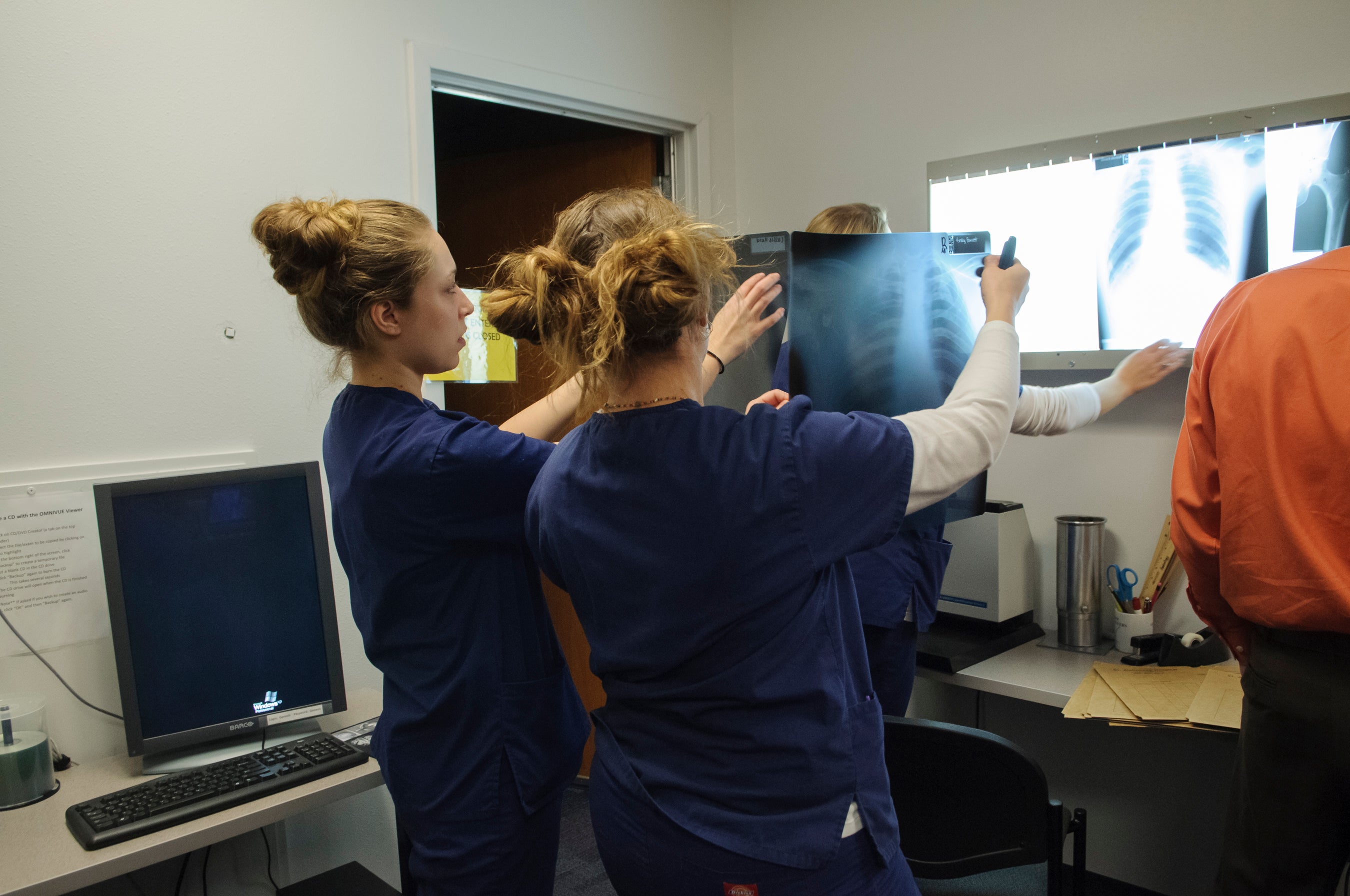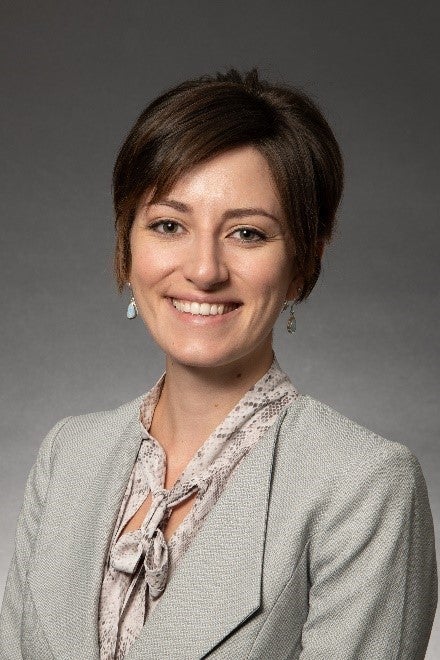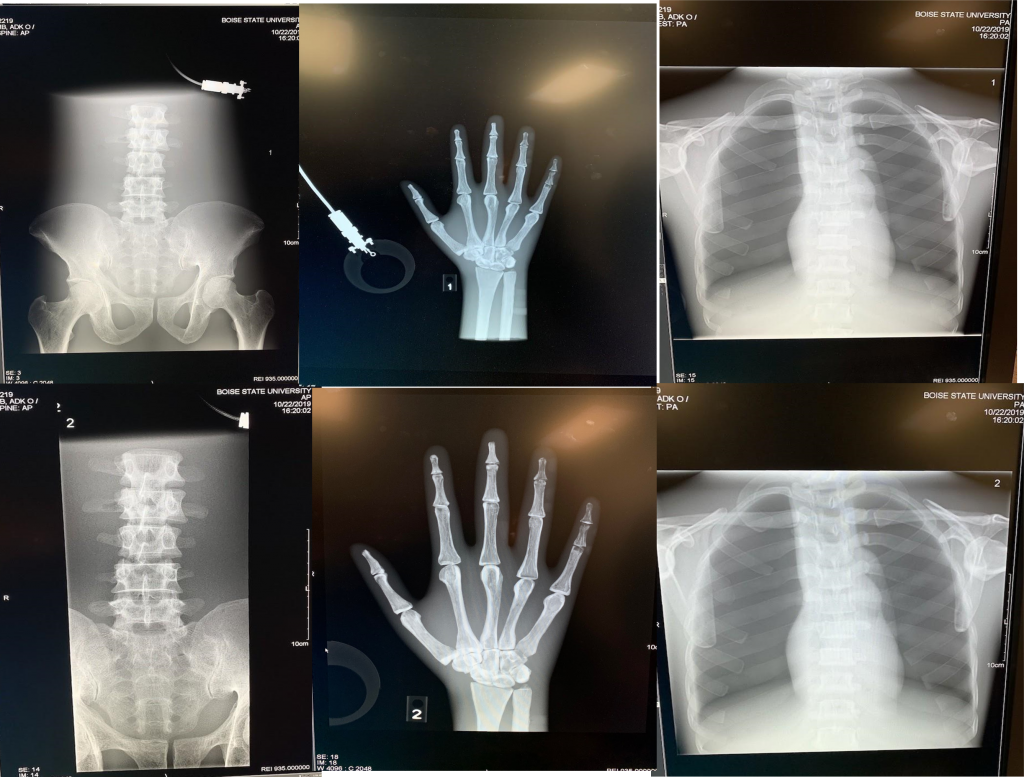
Boise State’s Department of Radiologic Sciences is building a reputation for preparing its students for highly-competitive physician assistant (PA) programs. Several Boise State graduates recently have gone on to attend Idaho State University’s program. Gaining admission to the program is very difficult – the university selects only a handful of students from a pool of 800 applications each year.
“There are dozens, if not hundreds, of prospective students vying for slots in PA schools across the nation as the profession has become high profile and is often found on top 10 lists of best jobs,” said Travis Armstrong, clinical coordinator and clinical instructor in the Department of Radiologic Sciences. “It is a testament to the strength of Boise State that nearly every year a graduate of the program decides to further their studies and gains admission to a PA school.”
The U.S. News and World Report ranked Physician Assistant as the third best job of 2020 due to the variety of settings a PA can work in, its job security and salary, and a variety of other factors. According to Armstrong, the field is expected to grow by 31 percent by 2028.

Megan Jones (BS, radiologic sciences, ’18) served as an adjunct faculty member for the department at Boise State in 2019 and is currently attending Idaho State’s PA program through August 2021. She believes that a career as a PA, with her experience in radiology, will provide an opportunity to promote healthy lifestyles and preventative measures of actively working toward a healthy community.
“The radiologic sciences program at Boise State gave me the confidence and experience I needed to pursue this career,” she said. “The rigors of the program taught me how to prioritize, organize, adapt, lead and work in a team to effectively maximize my academic achievement.”
Jones was the president of the local chapter of the Lambda Nu Honor Society for radiologic and imaging sciences and graduated as valedictorian of the program.
The Department of Radiologic Sciences combines rigorous coursework with clinical rotations in diverse settings. With the added challenge of completing 24 to 40 hours a week in the clinical setting while completing coursework, students become adept at time management skills, which prepares them for the dense studies that are required in PA school. The hands-on experience for students is highly sought after by PA programs that typically desire students who have significant work and volunteer experience in the clinical setting, said Armstrong.
“The foundation of knowledge I gained has helped me understand the importance of diagnostic imaging as an essential part of helping patients, gain a dynamic understanding of anatomy and understand the interworking of a hospital,” Jones said.

As Jones explained, radiographers are an integral part of the healthcare team. They are involved in surgeries, assist in procedures and throughout emergency departments, and conduct imaging for inpatients at all levels and ages. Physician assistants are similar in that they work in a variety of different areas and must be adaptive for all kinds of situations.
“Every specialty you can think of – neurology, surgery, urology, oncology, family practice – there is a physician assistant there seeing patients and providing high quality care,” said Don Sanford (BS, radiologic sciences, ’15), who graduated from Idaho State’s PA program in August 2019.
Sanford is now an urgent care PA for Primary Health in Boise, Meridian, Nampa and Caldwell. Since March, Sanford has primarily served at Primary Health’s respiratory clinics where patients with COVID-19 symptoms are evaluated and treated.
“I have learned so much throughout this year since COVID-19 hit Idaho,” he said. “New research results and CDC recommendations are constantly flowing down the pipeline, and it seems like everyday we are changing our process in some way to increase the quality of our care and ensure our patients are evaluated and treated effectively.”
He uses his experience as a former X-ray technologist at Saint Alphonsus Health System and current PA to spot coronavirus signs and abnormalities on radiographs for his patients without waiting for official radiologist reports. His early aspirations to provide top-quality care like this goes back to his bachelor’s degree at Boise State.
“Boise State’s radiologic sciences curriculum is academically rigorous and demanding, much like PA school,” Sanford said. “Getting an undergraduate degree in radiologic sciences is one of the best degrees to prepare someone for this career.”
Boise State offers three advanced modalities that students can pursue: sonography, magnetic resonance imaging (MRI) and computed tomography (CT). While some Boise State graduates attend PA school, others go on to study radiation therapy, nuclear medicine, interventional radiology, education and private industry medical imaging applications. Armstrong says the colloquium course is a “key and unique opportunity” offered by the program that helps students make informed career choices for their futures.
Jones has a message for prospective students who are interested in radiologic sciences at Boise State and envision a career in this field:
“You will be taught to think critically, value interdisciplinary collaboration, be a health advocate, use effective communication, and ultimately become a life-long learner,” she said. “It can provide a rich and rewarding career in healthcare.”